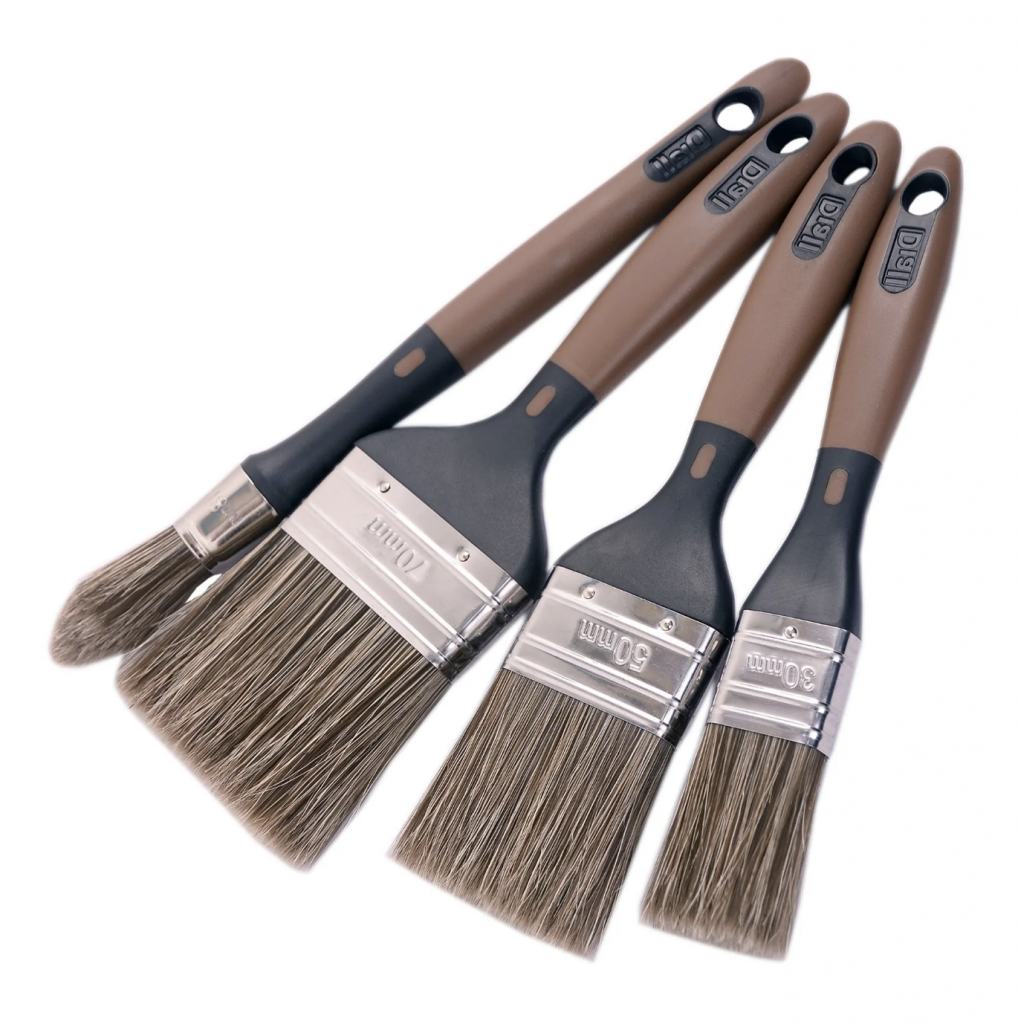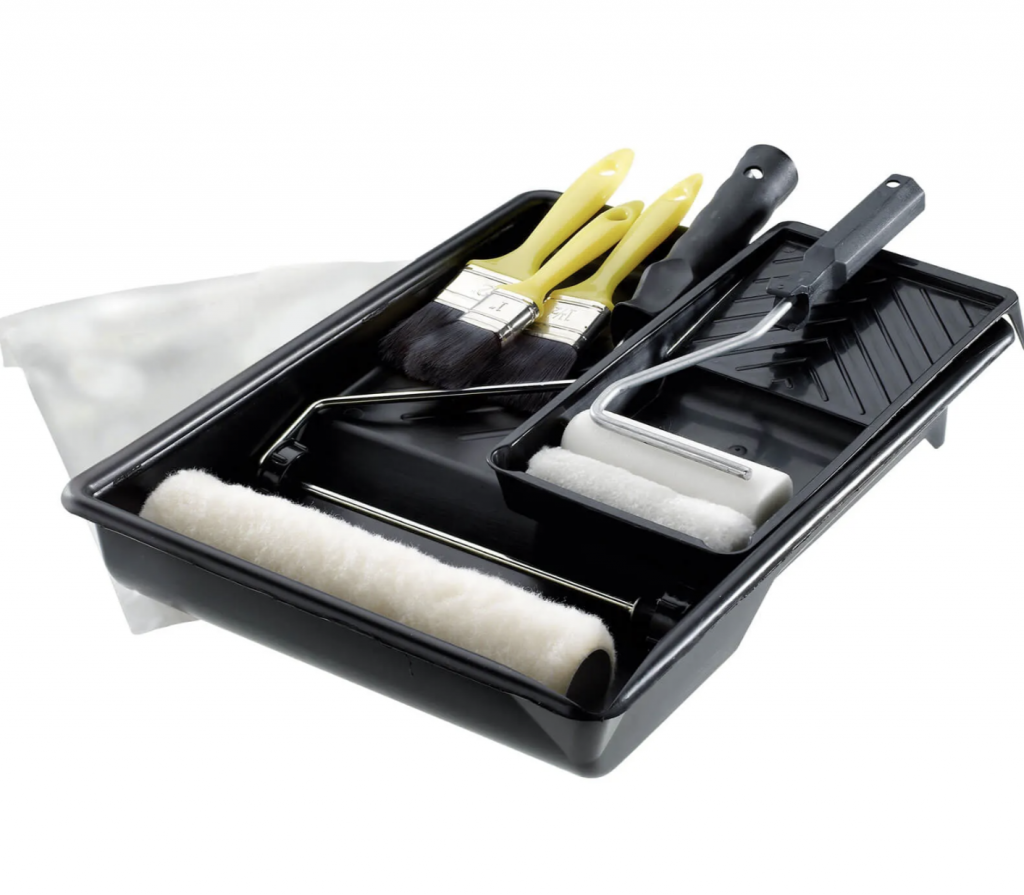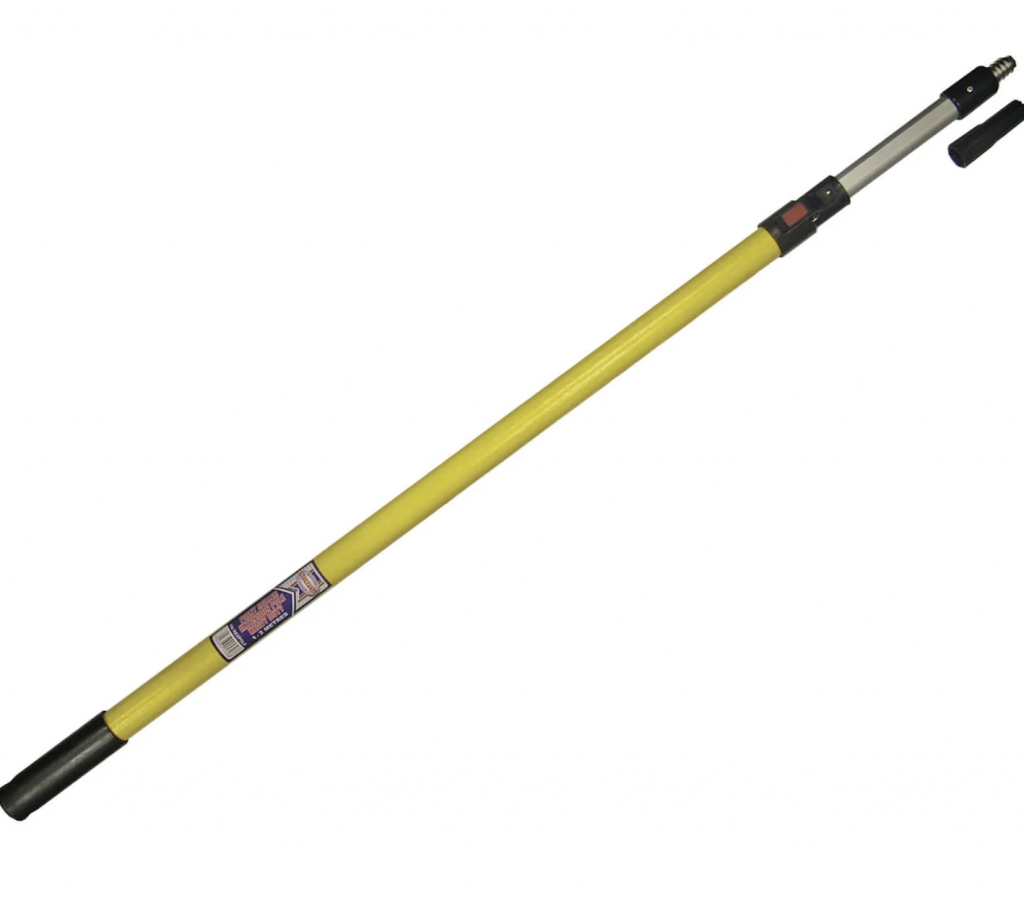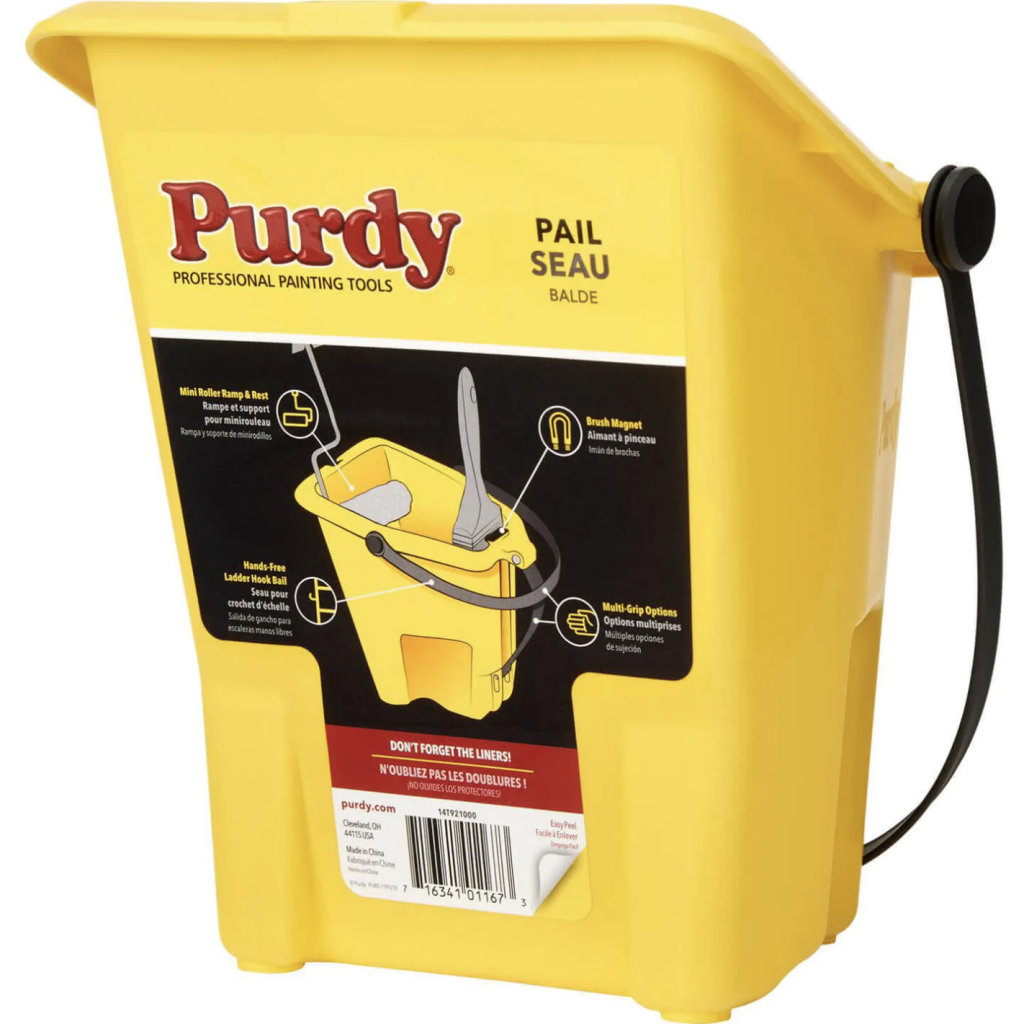Painting is an excellent way to refresh your living space, give your old furniture a new look, or spruce up your exterior walls. However, to achieve a professional and seamless finish, you need to have the right painting tools. Whether you’re a seasoned DIY enthusiast or a beginner, having the right tools for the job is essential. In this article, we will explore the must-have painting tools for any DIY project, from paint brushes to paint mixers to sanding tools.
Key Takeaways:
- Having the right painting tools is essential for achieving a professional finish in your DIY project.
- Paint brushes, roller sets, painter’s tools, and sanding tools are some of the essential painting tools you need to have.
- You can achieve optimal paint coverage by selecting the right roller refills for your paint roller set.
- Paint mixers are crucial for ensuring a consistent paint colour and texture.
- Selecting the appropriate tools for your specific project can help you achieve a flawless and satisfying result.
Paint Brushes

A good paint brush is a vital tool for achieving a flawless painted finish. Available in different sizes and bristle types, choosing the right brush for your project can make all the difference. Some common paint brush types include:
Natural Bristle Brushes
These paint brushes are made from animal hair, such as hog or ox. They are ideal for oil-based paints and are perfect for achieving a smooth finish.
Synthetic Bristle Brushes
These paint brushes are made from either nylon or polyester, most commonly used for water-based paints. They provide excellent coverage, as they don’t absorb as much water as natural bristle brushes.
Paint Brush Sizes
Brushes come in various sizes, from small touch-up brushes to large wall brushes. Smaller brushes are ideal for intricate work, while large brushes are best for painting large areas.
It’s essential to select the right size brush for each project to ensure coverage and achieve the desired outcome.
Paint Roller Sets

Paint roller sets are essential tools for covering large surface areas quickly and efficiently, making them perfect for DIY painting projects. With a variety of roller sizes, materials, and nap lengths available, choosing the right paint roller set is crucial to achieving a professional and seamless finish.
Sizes
The size of the roller you choose for your painting project will depend on the size of the area you need to cover. The most common roller sizes are 9 inches and 7 inches, but there are also smaller rollers available for more intricate and detailed work.
Read also: Best paint rollers
Materials
Choosing the right material for your paint roller is important as it can affect the quality of the finished result. Synthetic rollers are suitable for water-based paints, such as emulsion, while natural materials like lambswool are better suited for oil-based paints.
Nap Lengths
Choosing the right nap length of your paint roller can also affect the quality of your finished result. Short nap lengths are suitable for smooth surfaces, while longer nap lengths are better suited for textured surfaces like walls and ceilings.
| Nap Length | Surface |
| Short (less than 3/16 inch) | Smooth surfaces like doors and trim |
| Medium (3/16 inch to 1/2 inch) | Semi-rough surfaces like walls and ceilings |
| Long (greater than 1/2 inch) | Rough surfaces like stucco or textured walls |
When selecting the right paint roller set, consider the size of your project, the type of paint you’re using, and the surface you’re painting on. With the right tools, you can achieve a professional-looking finish for your DIY painting project.
Paint Roller Extension Poles

If you’re looking to paint walls or ceilings in a room with high ceilings, you’ll need a paint roller extension pole. It allows you to reach up high without the need for a ladder, which can be dangerous. There are two main types of extension poles; screw-fit and push-fit.
Screw-Fit Extension Poles
Screw-fit extension poles are screwed onto the paint roller handle and are more secure. They are available in a range of sizes and can be extended to reach up to 3 metres in height. They are ideal for painting walls and ceilings with high ceilings.
Push-Fit Extension Poles
Push-fit extension poles are easier to attach to the paint roller handle. They are available in a range of sizes and can be extended to reach up to 2.5 metres in height. They are perfect for painting walls and ceilings of average height.
Using a paint roller extension pole makes painting a high ceiling or wall much easier and quicker. It reduces the need for a ladder and allows you to get a better finish.
Painter’s Tools
Before painting, it is crucial to prepare surfaces adequately. Painter’s tools such as decorator knives, filling knives, putty knives, and bladed scrapers are indispensable for achieving a professional finish.
| Tool | Uses |
| Decorator knives | Perfect for stripping wallpaper and removing loose paint. Can also be used for creating clean lines along the edges of walls and ceilings. |
| Filling knives | Used for filling small cracks, indentations, and nail holes in walls that may otherwise disrupt the smoothness of the painted surface. |
| Putty knives | Primarily used for scraping, spreading and removing old loose putty. They also work well for smoothing out the surface of wood before painting. |
| Bladed scrapers | Designed for removing stubborn paint, glue, and other materials that may stick to the surface. Ideal for areas with tough-to-remove dirt and grime. |
By using the right painter’s tools for your specific project, you can ensure that the surface is ready for painting and achieve a perfect result.
Painting Accessories
When it comes to painting, having the right tools is essential. In addition to paint brushes and rollers, there are other accessories that can help make your painting project a success. The two main accessories that can make a difference are paint kettles and paint roller trays. They help you hold and distribute paint, making the process more manageable.
Paint Kettles

A paint kettle is a container designed to hold paint while you work. There are different types of paint kettles available, including plastic and metal. Some have built-in handles to make them easy to carry, and others are designed to hook onto a ladder or scaffold for easy access. The main advantage of using a paint kettle is that it provides a convenient source of paint and can help reduce the risk of spills.
| Type | Advantages |
| Plastic Paint Kettles | Lightweight and easy to transport, easy to clean |
| Metal Paint Kettles | Durable and long-lasting, ideal for frequent use |
| Hook-On Paint Kettles | Convenient for elevated painting, reduces the need for climbing up and down ladders |
Paint Roller Trays
A paint roller tray holds paint, enabling you to dip the roller in and distribute the paint evenly. There are different types of paint roller trays available, including plastic and metal. Some have built-in grids or ridges that help remove excess paint, ensuring an even application. Using a roller tray also reduces the risk of spills and provides a stable and convenient source of paint.
| Type | Advantages |
| Plastic Paint Roller Trays | Lightweight and easy to use, disposable options available, easy to clean |
| Metal Paint Roller Trays | Durable and long-lasting, ideal for frequent use, can hold more paint |
| Grid/ Ridge Paint Roller Trays | Removes excess paint, ensuring more even coverage, reduces the risk of drips and spills |
Using paint kettles and paint roller trays is a simple way to make your painting project more efficient and reduce the risk of spills and mess. Consider the different options available and select the ones that best suit your needs.
Sanding Tools
Before painting, sanding tools help achieve a smooth and even surface. Sanding can remove imperfections, old finishes, or rough spots. The right tool for your surface preparation needs depends on the material you are working with and the level of abrasiveness you require.
Sanding Rolls
Sanding rolls are perfect for sanding flat surfaces or inside curves. They are versatile and can be cut to size, making them great for customised applications. Different grits are available, from fine to very coarse.
Sanding Blocks
Sanding blocks are ideal for small projects and hard-to-reach places. They usually come in a range of grits and can be used for wet or dry sanding. They are also washable and reusable, making them environmentally friendly.
Sanding Sheets
Sanding sheets are available in different sizes, grits, and materials, such as ceramic, aluminum oxide, or silicon carbide. They can be used for wet or dry sanding, and they are suitable for hand sanding or power tools.
Wet and Dry Sandpaper
Wet and dry sandpaper is excellent for sanding metal, wood, and painted surfaces. As its name implies, it can be used for wet or dry sanding, and its waterproof qualities mean it can be used for automotive projects or outdoor applications.
Overall, sanding tools are crucial for achieving the perfect finish in your painting projects. They allow for a smooth and even surface, which is essential for painting results.
Paint Mixers
Before applying paint to any surface, proper mixing is crucial for a consistent finish. Paint mixers offer an efficient way to blend and stir paint quickly and uniformly. They save time and reduce the effort required for manual mixing, giving you a more consistent paint color and texture.
Types of Paint Mixers
There are two primary types of paint mixers – hand mixers and machine mixers.
- Hand Mixers: These are manual mixers that require a good amount of elbow grease to operate. They are ideal for small paint projects and touch-ups. The hand mixers are operated by twisting, shaking and rolling to blend the paint. They are easy to use and clean, but they do not offer the same consistency as machine mixers.
- Machine Mixers: These are powerful paint mixers that use a motor to produce a consistent blend of paint. They are ideal for large paint projects and commercial use. Machine mixers offer high-speed mixing, which saves time and produces a perfect mixture every time. They are specifically designed to mix paint in large quantities.
Benefits of Paint Mixers
Paint mixers offer many benefits, including:
- Time-saving: Mixing paint by hand can be tiring and time-consuming. A paint mixer can save time and effort in the preparation of paint, giving you more time to focus on other areas of your project.
- Uniformly blended paint: A paint mixer ensures that your paint is evenly distributed throughout. This ensures that your final product has a consistent finish and reduces the risk of streaking or clumping.
- Increased efficiency: A paint mixer allows you to mix paint in larger quantities, making it an efficient way to deal with large painting projects.
Investing in a paint mixer is a wise choice for any painter, whether you’re a DIY enthusiast or professional painter. It streamlines the process, reduces the effort required, and ensures a consistent finish every time.
Roller Refills
When it comes to achieving a smooth and even paint application, using the right roller refills is essential. The roller refill you choose will depend on your specific painting project and the texture of the surface you’re painting.
Roller refills come in various materials, including foam, polyester, mohair, and sheepskin, each with a different texture and suitability for various surfaces. Synthetic roller refills are ideal for smooth surfaces, while natural fibers such as mohair and sheepskin are better suited for rough or textured surfaces.
Nap length is another consideration when selecting roller refills. Short nap roller refills are ideal for glossy and smooth finishes, while longer nap roller refills are better for textured surfaces, ensuring the paint can get deep into the crevices for better coverage.
Choosing the right roller refill for your project can save you time and ensure a professional finish. Refer to the manufacturer’s recommendations and consult with a professional if you’re unsure which roller refill to select for your project.
Conclusion
It’s clear that having the appropriate painting tools is crucial for any successful DIY project. From paint brushes to roller sets, paint mixers to sanding tools, we’ve covered the must-have tools to achieve a professional finish. By selecting the appropriate tools for your specific project, you can ensure a satisfying result that will last for years to come.
Investing in quality painting tools may seem expensive, but it will save you money in the long run by ensuring that you achieve the desired results the first time around. It’s also worth noting that taking good care of your painting tools will extend their lifespan, saving you money in replacement costs for the future.
Our experts at wallmates.co.uk suggest that you invest in a good set of painting tools that will last for years and always remember to clean them thoroughly after each use.
We hope this guide has been helpful in providing insights into the essential painting tools for DIY projects and how they can make your painting project a success. Whether you’re a seasoned DIY enthusiast or a beginner looking to learn, these tools are a must-have for any painting project.
So, get your painting tools ready and start your next DIY project today!
Keywords: painting tools, DIY projects
FAQ
What are the essential painting tools for DIY projects?
The essential painting tools for DIY projects include paint brushes, paint roller sets, decorator knives, filling knives, putty knives, bladed scrapers, paint kettles, paint roller trays, sanding rolls, sanding blocks, sanding sheets, wet and dry sandpaper, paint mixers, roller refills, and paint roller extension poles.
What types of paint brushes are available and how do I choose the right one?
Paint brushes come in different sizes and bristle types, such as synthetic or natural. The selection of the right brush depends on the type of paint and the surface you’re painting. Synthetic brushes are suitable for water-based paints, while natural bristle brushes work well with oil-based paints.
What should I consider when selecting a paint roller set?
When selecting a paint roller set, consider the roller size, material, and nap length. Smoother surfaces require shorter naps, while rougher surfaces need longer naps. Roller covers made of synthetic materials are suitable for water-based paints, while natural fibre covers are best for oil-based paints.
Why do I need a paint roller extension pole?
A paint roller extension pole allows you to reach high walls or ceilings without the need for a ladder, making the painting process safer and more efficient.
How do decorator knives, filling knives, putty knives, and bladed scrapers help in painting projects?
These tools are essential for preparing surfaces before painting. Decorator knives help remove loose paint, filling knives are used for filling gaps and holes, putty knives smooth out surfaces, and bladed scrapers remove stubborn paint or wallpaper.
What are the benefits of using paint kettles and paint roller trays?
Paint kettles and paint roller trays provide a convenient way to hold and distribute paint during the painting process. They help prevent spills, reduce mess, and ensure easy access to paint while painting.
What sanding tools should I use before painting?
Sanding tools such as sanding rolls, sanding blocks, sanding sheets, and wet and dry sandpaper are essential for achieving a smooth and even surface before painting. The selection of the right tool depends on the specific surface and the level of sanding required.
Why do I need a paint mixer?
A paint mixer is necessary to ensure thorough mixing of paint, resulting in consistent colour and texture. It helps prevent colour variations and ensures a uniform finish.
What should I consider when selecting roller refills?
When selecting roller refills, consider the nap length and material. Longer naps are suitable for textured surfaces, while shorter naps work well on smooth surfaces. Synthetic materials are ideal for water-based paints, while natural fibre materials are best for oil-based paints.
Leave a Reply